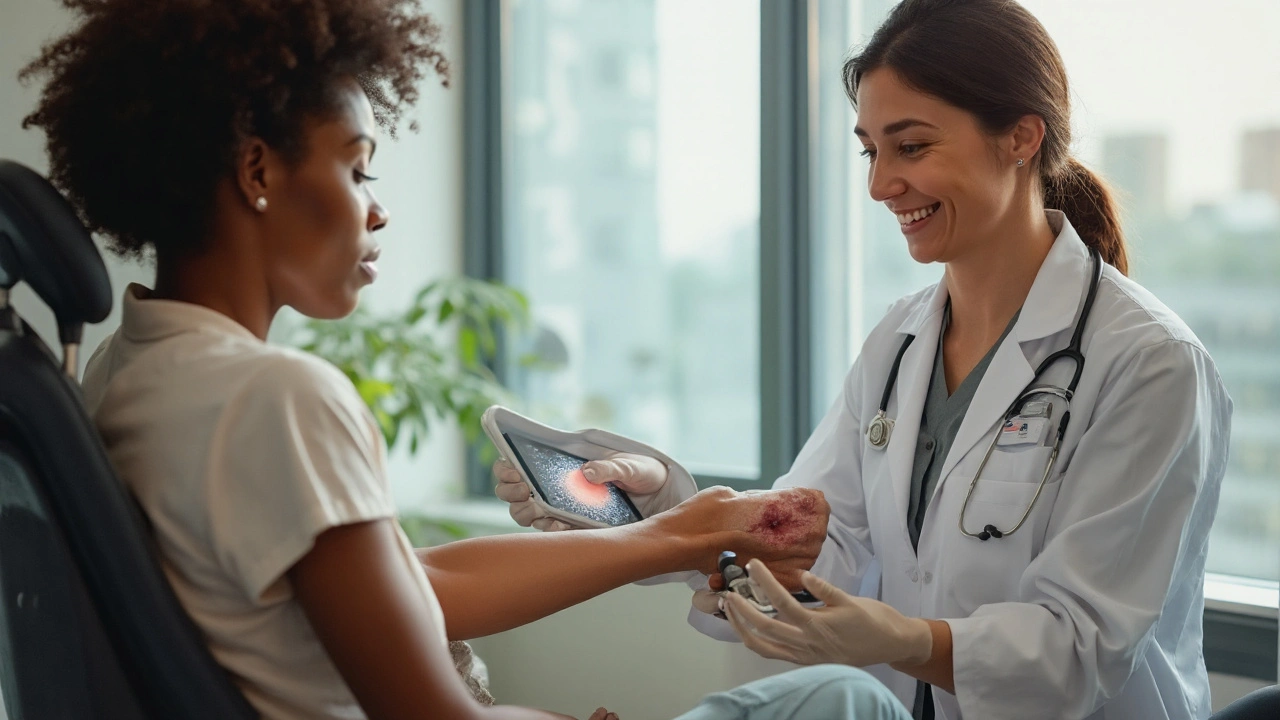If you’ve got an itchy rash, ringworm, or athlete’s foot, a topical antifungal is usually the first thing doctors recommend. These are creams, gels, or sprays you put straight on the skin to kill the fungus causing the problem. Unlike pills, they stay where you need them, so you often see results faster and with fewer side effects.
Most over‑the‑counter (OTC) antifungals contain ingredients like clotrimazole, miconazole, terbinafine, or tolnaftate. Each works a little differently, but the goal is the same: stop the fungus from growing. You can find them in the pharmacy aisle, usually in small tubes for easy application.
Clotrimazole (found in brands like Lotrimin) is a go‑to for athlete’s foot and jock itch. It’s cheap, works in a few days, and needs to be applied twice a day. Miconazole (Micatin) does a good job on yeast infections and works similarly. Terbinafine (Lamisil) is a bit stronger and often clears up tough ringworm in under a week.
When you pick a product, read the label for the exact fungus it treats. Some creams are labeled for “fungal skin infections” which covers most common problems, while others are specific to yeast. If you’re not sure, a quick chat with the pharmacist can clear things up.
Apply the cream to clean, dry skin. Wash your hands before and after you use it, unless the medication is for your hands. Use a thin layer and rub it in gently – you don’t need a lot. Most products say to keep using them for a week after symptoms disappear; this helps prevent a comeback.
Watch for irritation, redness, or worsening itch. If those happen, stop using the product and talk to a doctor. Also, if the rash spreads, looks swollen, or you have fever, it could be a deeper infection that needs oral medication.
People with diabetes, weak immune systems, or poor circulation should be extra careful. Even a mild infection can become serious if your body isn’t fighting it well. In those cases, a prescription-strength antifungal or an oral tablet might be needed.
Remember to keep the area covered if it’s in a spot that gets sweaty or wet, like between toes. Change socks daily, wear breathable shoes, and avoid tight clothing. Good hygiene plus the right cream is usually all you need to beat a skin fungus.
In a nutshell, topical antifungals are cheap, easy, and work fast for most common skin fungi. Pick the right active ingredient, follow the label, and keep an eye on how your skin reacts. If anything feels off, don’t wait—get a quick check‑up and stay fungus‑free.

Learn why precise diagnosis of skin yeast infections is crucial, how to spot symptoms, use proper tests, and choose the right treatment to avoid complications.
Hey there awesome parents! Managing spasms in kiddos can be as tricky as solving a Rubik's cube blindfolded, am I right? But don't fret, there are ways to ease those twitching tiny muscles. First off, keeping your child hydrated is as crucial as keeping your plant watered - you don't want either to wither, right? Also, regular stretches are like the secret ingredient in Grandma's pie, they can work wonders! So, next time your little one starts twitching like a breakdancer, remember these tips and know that you've got this under control!
Looking for cheap generic Premarin online? See if it exists in 2025, safe pharmacy checks, fair prices in Canada/US, and proven, lower-cost alternatives.
Learn how to safely buy cheap generic Provera online in Canada. Get a step‑by‑step guide, price comparison, verification tips, and FAQs for a hassle‑free purchase.
Practical guide to using exercise to protect your liver with chronic hepatitis B-safe intensity, weekly plans, red flags, and what the science actually says.
Searching for the best 2025 alternatives to Verapamil can be overwhelming. This article breaks down each substitute, looking at the good, the bad, and who should consider them. You'll see a clear comparison of side effects, uses, and what kinds of patients each medication fits best. Plus, if you're not finding relief with Verapamil or can't use it due to side effects, you'll leave with a better idea of your next steps. Everything here is straightforward, current, and designed for people who want answers, not jargon.